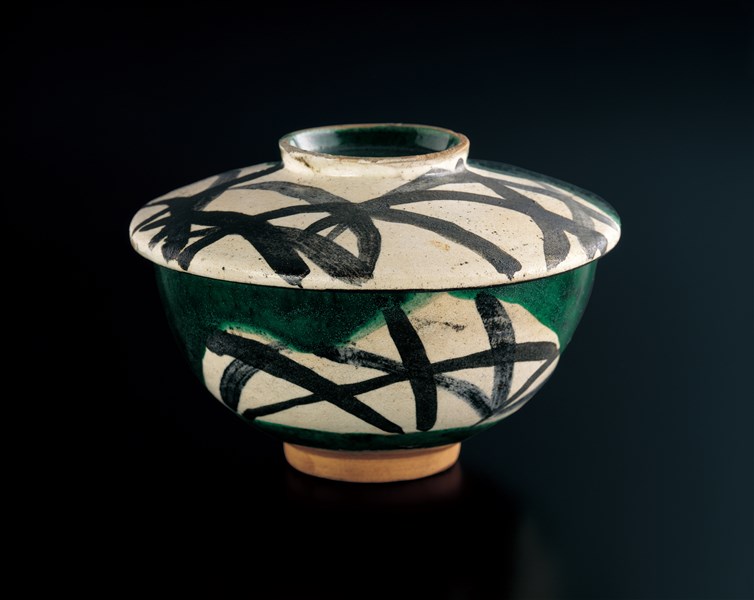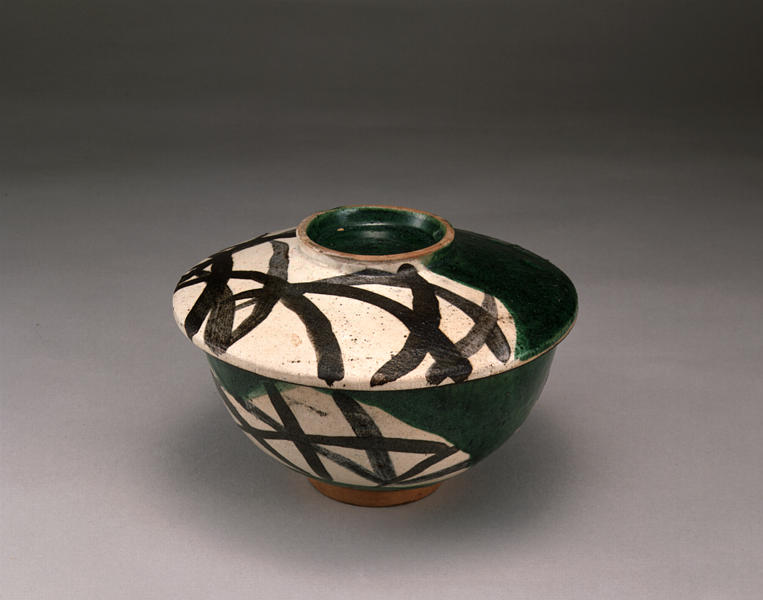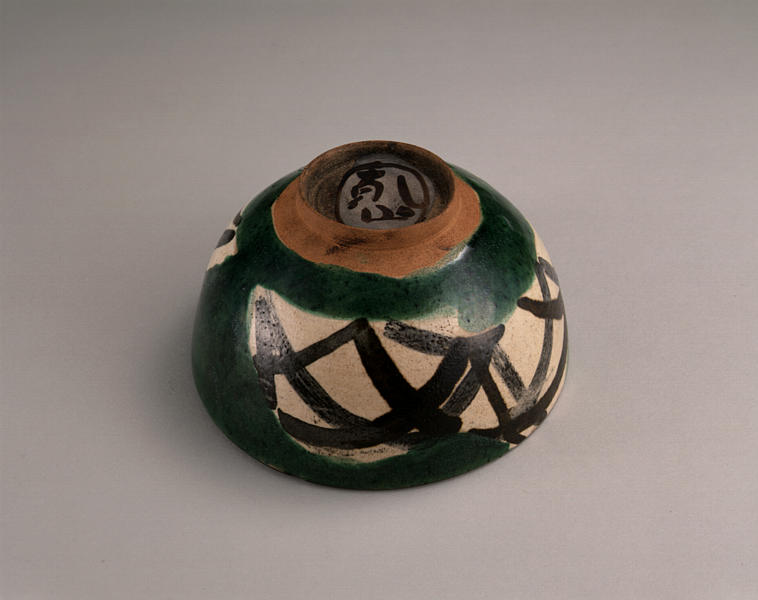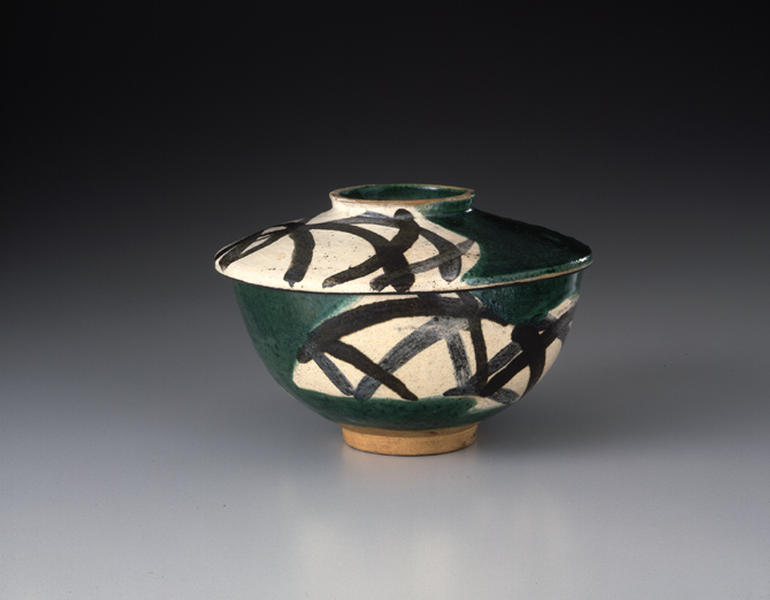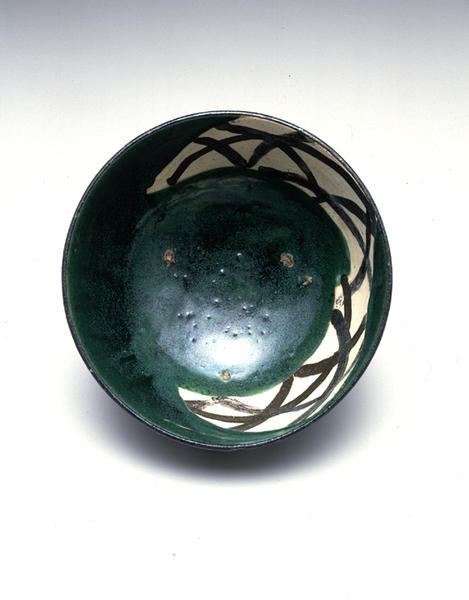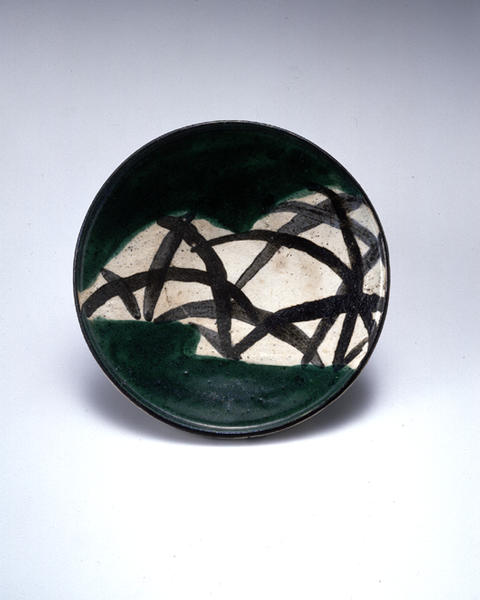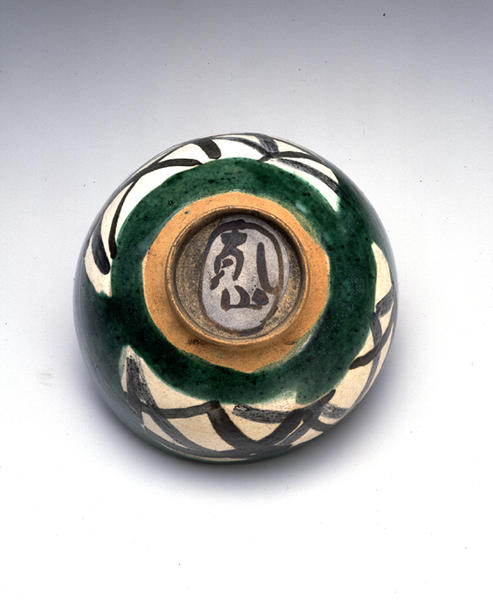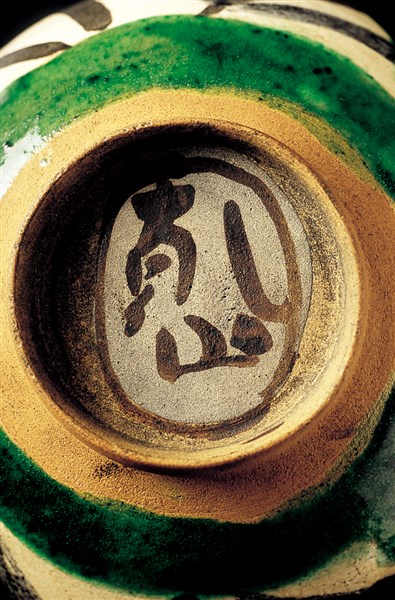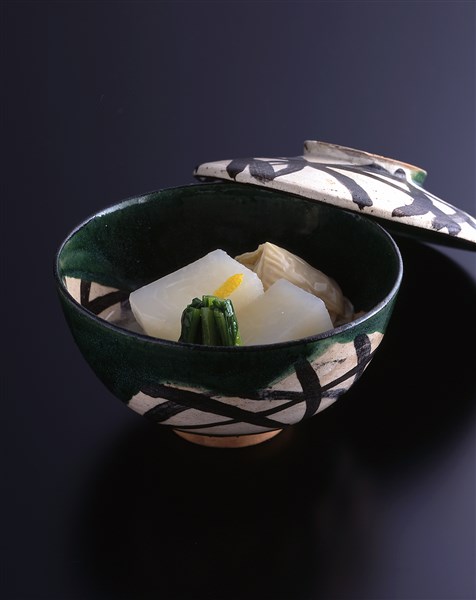Lidded Bowl with Silver Grass Design
- Kyoto
- Edo period
- 18c
- Kenzan ware, high-fired pottery, overglaze enamels
- H-9.5 D-14
Catalogue Entry
Kenzan's artistic style is remarkably varied; he produced copies of a type of Korean pottery known as hakeme (brushed, brush mark), as well as copies of pottery from Cizhou kilns in China and works from Delft kilns in Holland, not to mention Japanese pottery of different styles employing iron underglaze and coloring. Kenzan, who was highly cultured with a broad knowledge of art, absorbed characteristics of different styles and allowed them to emerge in his own works.
This thin-walled tea bowl was first formed carefully on a potter's wheel, then white slip was applied to cover its surface. Subsequently, the grass design was added with iron underglaze, leaving large areas which were then painted in deep green. This combination of designs resonates with what Oribe ware is known for, that is, the contrast between solid colors and design motifs and the contrast between light and dark colors are precisely those originated by Oribe. Kenzan, however, admirably achieved a delicate sense of balance of contrasts and made it his very own. The Japanese pampas grass design does not suggest excessive delicateness and unassertiveness of lines typical of Kyo ware; instead, it embodies design qualities reminiscent of the so-called Rinpa school with clear influences from Sotatsu, Koetsu, and Korin.
Though it is quite likely that this lidded bowl, with designs over the entire surface was part of a set of five or ten, only the present work remains today. In the interior of the base, Kenzan's signature is inscribed with iron under-glaze in a white oval area delineated with a line drawn with iron underglaze.
Lidded Bowl with Silver Grass Design
Lidded Bowl with Silver Grass Design
This thin-walled bowl and lid were carefully thrown on the wheel, then covered with white slip. The silver grass motif was painted in underglaze iron and cobalt and overglaze green applied to undecorated areas.
Silver grass patterns are often called Musashino designs, for the broad expanse of Musashino, a wild, almost bleak plain stretching west of today’s Tokyo, long renowned as the habitat of the murasaki (Lithospermum erythrorhizon, purple gromwell). A large body of poetry treats the many emotions associated with that rustic area: Musashino appears, for instance, in the Manyoshu (Collection of Ten Thousand Leaves) and the Kokin wakashu (Poems Ancient and Modern) poetry anthologies and in the Tales of Ise (episode 41). From the Edo period on, it has ranked with Kyoto as a location for treatment as a design, with silver grass and other autumn plants often included in Musashino-inspired works.
This katamigawari design, with its combination of two very different patterns and colors, suggests the influence of Oribe ware. The contrast between the plain and the decorated areas and the dark and light in the use of colors creates a very Oribe-inspired design. From the Momoyama period on, Oribe and other Mino ceramics reached Kyoto in great numbers, as we know from the artifacts that have been excavated from residential sites in the city. Kenzan doubtless encountered them, and it would not be surprising if he were inspired by them in creating this design. Oribe ware designs are also thought to be related to tsujigahana and other types of kimono designs; given that Kenzan’s family operated the Kariganeya, which dealt in deluxe kimono textiles, it would be natural for Kenzan to be stimulated by Oribe ware. Since shards with Oribe designs have been found in excavating the Narutaki kiln site, we can infer that Kenzan had been incorporating them in his work from his Narutaki period. The silver grass design we see in this lidded bowl has none of the delicacy of Kyoto ware (Kyoyaki) but expresses the Rimpa design sense, in the tradition of Sotatsu, Koetsu, and Korin.
Careful thought was given to the design of this lidded bowl, probably one of a set of ten. The Kimbell Art Museum in Texas has a bowl without the lid, and a lid alone is said to be in a private collection.
The interior of the bowl has three spur marks at the bottom. It is unglazed from where the foot ring attaches to the body; the fine grained, rather brittle red clay is visible. Inside the foot is an oval in white slip, outlined in underglaze iron, and the Kenzan signature, also in underglaze iron.
